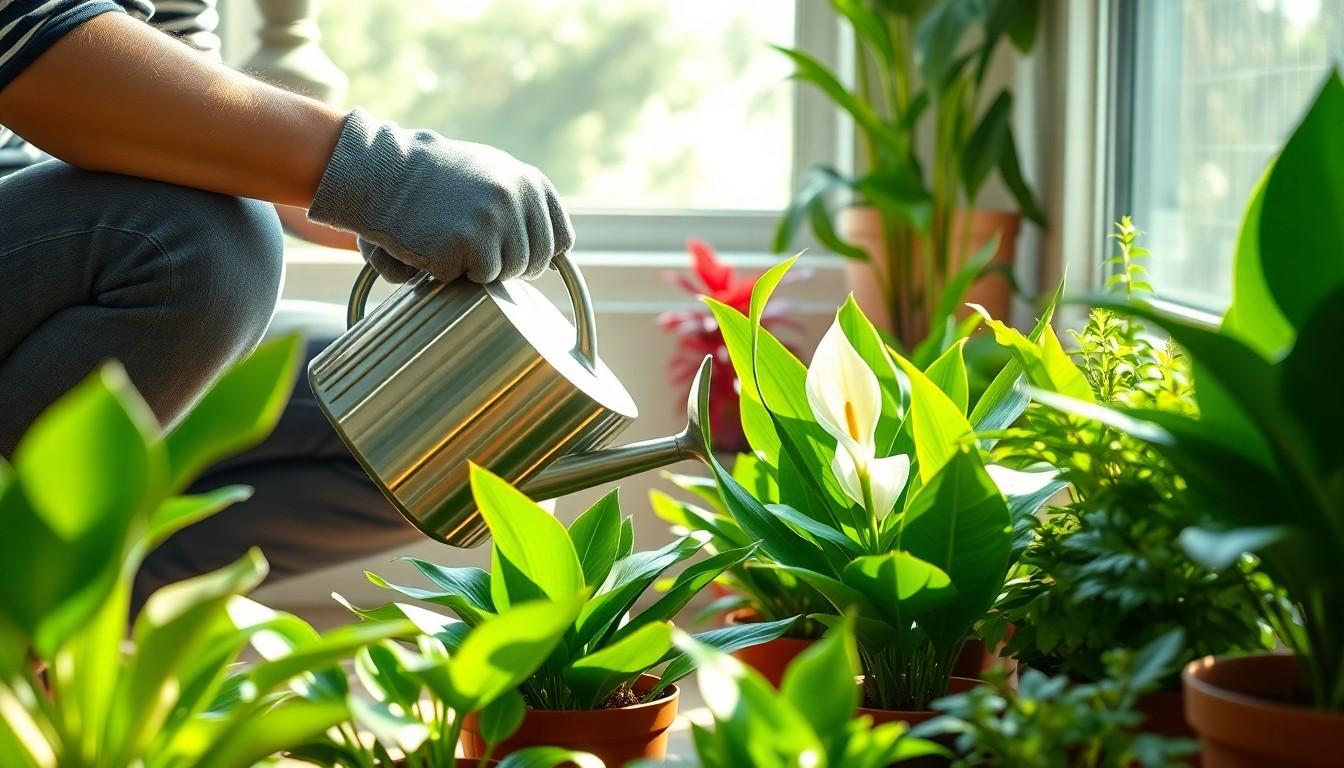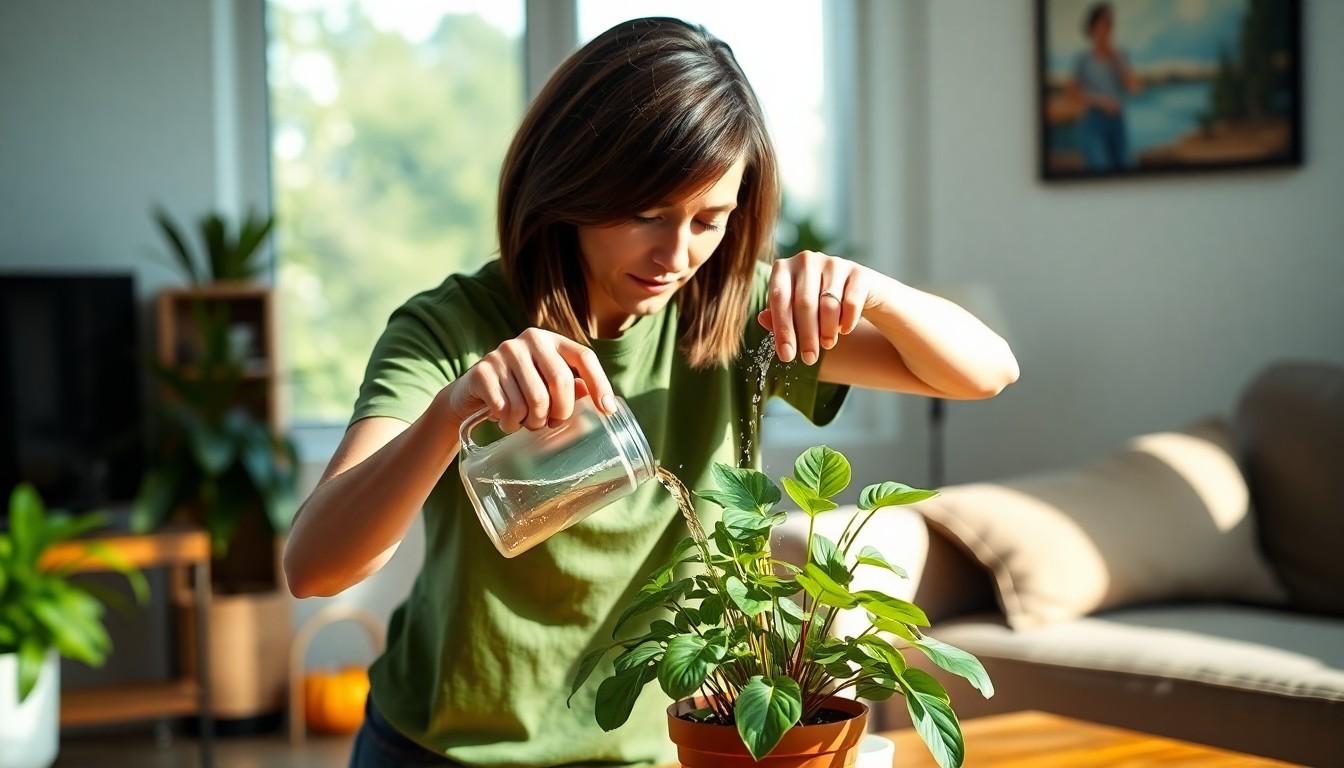Phone:
(701)814-6992
Physical address:
6296 Donnelly Plaza
Ratkeville, Bahamas.

Indoor plants bring life to any space, but keeping them happy can feel like a high-stakes game of water roulette. Overwater them, and they’ll drown in their own misery; underwater them, and they’ll be auditioning for a role in a desert documentary. So how often should one water these leafy companions without turning into a plant parent nightmare?
Indoor plants vary in their water requirements based on several critical factors. Knowing these aspects helps maintain plant health and ensures thriving greenery.
Light exposure significantly influences water needs. Bright, indirect light increases evaporation, requiring more frequent watering. Soil type determines retention; sandy soils drain quickly while clay retains moisture longer. Room temperature also plays a role. Warmer environments accelerate water loss, while cooler conditions can slow it down. Additionally, humidity levels impact moisture retention. High humidity reduces evaporation rates, requiring less frequent watering. Seasonal changes affect indoor plant watering routines. During growth phases, plants need more water, while dormancy periods require less.
Snake plants thrive with minimal watering, needing water every 2-6 weeks based on conditions. Peace lilies prefer moist soil, requiring watering approximately weekly. Pothos grow rapidly and benefit from weekly watering, especially in bright light. Spider plants like to dry out slightly between waterings, needing water every 1-2 weeks. Cacti, known for drought tolerance, only need watering every 3-4 weeks. Understanding these preferences aids in establishing a consistent care routine for each plant.

Understanding how to care for indoor plants includes recognizing when to water them and how to do it properly.
Leaves might droop or curl, indicating a water deficiency. Soil that feels dry a few inches below the surface signals a need for moisture. Yellowing leaves often point to underwatering or other stress factors. Checking pot weight can also provide insights; dry pots feel significantly lighter. If a plant’s growth stagnates, it may lack sufficient water.
Watering methods directly impact indoor plant health. Use room temperature water to avoid shocking roots. Water until it drains from the bottom, ensuring even saturation. Employ a moisture meter to gauge soil humidity accurately. Always adjust timing based on the plant’s environment; hotter spaces may require more frequent watering. Finally, consider using self-watering pots to simplify the process for busy plant owners.
Indoor plants require tailored care throughout the seasons. Understanding seasonal changes helps in determining the right watering frequency.
Winter months often lead to slower growth in many plants. As a result, watering generally decreases. During spring and summer, growth accelerates, making increased moisture essential. Autumn sees a gradual decline in growth, prompting slight adjustments in watering frequency. Monitor your plants closely during these transitions for the best results.
Room temperature significantly affects indoor plant watering needs. In warmer conditions, plants may dry out quickly, necessitating more frequent watering. Conversely, cooler environments retain moisture longer. Humidity levels also impact water retention; drier air often leads to quicker evaporation. Use moisture meters to gauge soil dampness and refine your watering habits accordingly. Familiarity with your plant’s specific environment ensures optimal care.
Caring for indoor plants requires awareness of common mistakes. Understanding these pitfalls helps ensure healthier, thriving plants.
Overwatering can lead to root rot, a significant danger for indoor plants. Symptoms of overwatering include yellowing leaves and mushy roots. On the other hand, underwatering causes stress, resulting in drooping leaves and dry soil. Both conditions impact a plant’s health negatively. Correct watering frequency depends on each plant’s specific needs, light exposure, and humidity levels. Monitoring soil moisture prevents these issues, allowing for a balanced watering routine that supports plant growth.
Using the right watering tools influences plant care quality. Watering cans with narrow spouts allow for precision, directing water where it’s needed most. Improper tools, like garden hoses, may cause overwatering or uneven distribution. Ensure the tool fits the plant size; smaller pots benefit from more controlled watering methods. Additionally, measuring cups can help provide exact amounts for specific plants. Employing appropriate tools simplifies the process and promotes healthy indoor greenery.
Caring for indoor plants requires a thoughtful approach to watering. Understanding each plant’s specific needs and environmental factors is crucial for maintaining their health. By observing signs of distress and adjusting watering routines accordingly, indoor gardeners can cultivate thriving greenery in their homes.
With the right techniques and tools, such as moisture meters and precision watering cans, it’s possible to avoid common pitfalls like overwatering or underwatering. Seasonal changes also play a significant role in watering frequency, making it essential to stay attentive throughout the year. Embracing these practices will not only enhance plant vitality but also enrich the indoor living space.